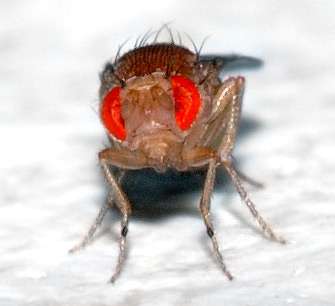What drives circadian rhythms in the polar regions?

In temperate latitudes, the right timing is crucial for almost all living things: Plants sprout with the advent of spring, bees know the best times to visit flowers, people get tired in the evening and wake up again in the morning. The constant change between light and dark is the rhythm to which all living beings must adapt if they want to survive and reproduce. Circadian clocks regulate the timekeeping mechanism in each organism and adjust it to changes.
But what happens in environments like the polar regions, where the day-night cycle no longer follows the typical 24-hour rhythm, when twilight is directly followed by dawn or when the sun is low above the horizon only for a few hours each day? Scientists from the Department of Neurobiology and Genetics of the University of Würzburg have looked into these questions; Dr. Pamela Menegazzi was in charge of the study. The team has published its results in the latest issue of Current Biology.
"Circadian clocks with a periodicity of about 24 hours enable animals to adapt to the day-night cycles. However, if these clocks are too rigid, this could be a disadvantage when adapting to weakly rhythmic environments like the polar regions," Menegazzi says. She explains that several high-latitude species that live in the far north or south are known to stop adapting their activities to a 24-hour rhythm and have adopted an arrhythmic behaviour instead.
Two possible explanations
At the Department of Neurobiology and Genetics, it's all about the circadian clock of Drosophila, also known as the common fruit fly. Only 150 neurons form the basis of the fly's circadian clock, whose functions are well-known, for the most part. Drosophila species are encountered all over the world. They even thrive at very high latitudes where they exhibit the typical arrhythmic activity pattern. They are also found in subarctic regions where they are capable of adjusting their evening activity to the sometimes very long period of twilight.
It has been unknown previously which molecular mechanisms in the flies' clock system are responsible for these regional adaptations. The researchers discussed two models: "The arrhythmicity could either be due to a loss of the molecular oscillation within the master clock, or alternatively, a missing link between this master clock and its subordinate structures could be responsible," says Pamela Menegazzi.
Comparing two fly species
To answer this question, Menegazzi and her team conducted what is probably the first comparative analysis across genera. In addition to Drosophila, the scientists studied Chymomyza, a genus of vinegar flies that diverged from Drosophila about 5 million years ago to successfully colonize both low and high latitudes. The scientists chose this approach to take a closer look at the evolutionary adaptations of the circadian clock, which facilitate the life of animals in the Arctic and subarctic.
The result: "Both explanations are equally valid," says Menegazzi. At least the molecular biological findings of this study support this assumption. In Drosophila ezoana, for example, the loss of the molecular clock function in the master clock facilitated the adaptation to living at high latitudes. The result is the same in Chymomyza costata, but due to a missing link between the master clock and its output. "This suggests that the ability to maintain behavioral rhythmicity has been lost more than once during the evolution of the Drosophilidae family."
Strong rhythms can be a disadvantage
In their study, the scientists examined an old concept of chronobiology, which says that circadian clocks must have certain properties, namely a 24-hour rhythm, the ability to synchronise to external stimuli, and all "self-sustaining" property, which means the ability to intrinsically maintain a rhythm in the long run. "It is becoming increasingly apparent that many organisms that are not standard model organisms do not possess all these characteristics," Menegazzi says.
At the same time, the results support the long-held hypothesis that strong behavioral rhythms may be a disadvantage in weakly rhythmic environments such as the polar regions. Additionally, they help scientists understand how animals adapt to different ecological niches and which characteristics could be beneficial in extreme environments.
The researchers believe that identifying the characteristics that could be necessary to successfully colonize high latitudes could become even more relevant in light of climate change.
More information: Life at high latitudes does not require circadian behavioral rhythmicity under constant darkness. Current Biology, DOI: 10.1016/j.cub.2019.09.032
Journal information: Current Biology
Provided by Julius-Maximilians-Universität Würzburg


















